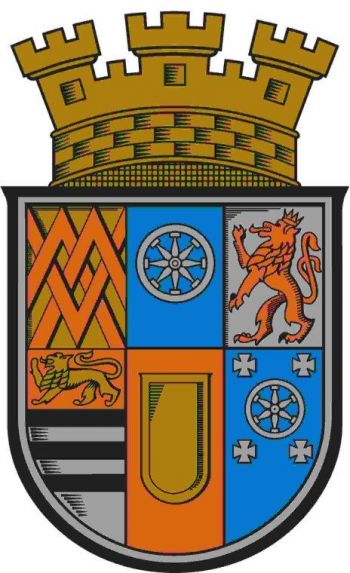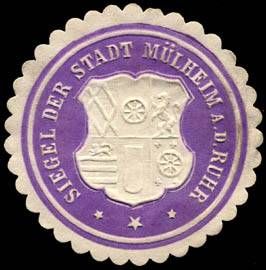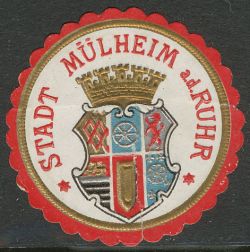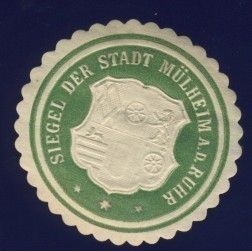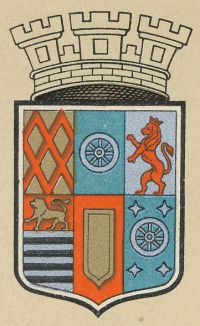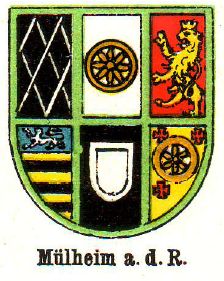Mülheim an der Ruhr: Difference between revisions
Knorrepoes (talk | contribs) m (Text replacement - "{{de}}" to "") |
Knorrepoes (talk | contribs) m (Text replacement - "{| class="wikitable"↵|+Official blazon↵|-↵|'''German'''↵| ↵|-↵|'''English''' ↵| {{blazon wanted}}↵|}" to "{| class="wikitable" |+Official blazon |- |'''German''' | blazon wanted |- |'''English''' | blazon wanted |}") |
||
| Line 13: | Line 13: | ||
|- | |- | ||
|'''German''' | |'''German''' | ||
| | | blazon wanted | ||
|- | |- | ||
|'''English''' | |'''English''' | ||
| | | blazon wanted | ||
|} | |} | ||
Revision as of 07:21, 6 April 2023
MÜLHEIM AN DER RUHR
State : Nordrhein-Westfalen
Urban District (Kreisfreie Stadt) : Mülheim an der Ruhr
Additions : 1878 Eppinghofen; Mellinghofen; 1904 Broich, Holthausen, Saarn, Speldorf, Styrum1920 Menden, Raadt; 1929 Selbeck, Ickten; 1975 Mintard (since 1930 part of Kettwig)
| German | blazon wanted |
| English | blazon wanted |
Origin/meaning
The arms were first used in 1890 and officially granted in 1925.
The arms are the arms of the last Counts of Daun-Falkenstein, who, as vassals of the counts of Berg, ruled Mülheim until 1659. The quarters are Daun, Falkenstein, Limburg, Oberstein, Broich and Reipoltzkirchen.
Whether the city actually used arms before 1890/1925 is not known. The arms of the city have been used widely since the early 20th century, but not always correctly. Sometimes the colours are used wrongly, but especially the number of black bars for the Oberstein quarter varied between three and four.
| |
Seals of the city from around 1900. |
|
| The arms by Hupp in the Kaffee Hag albums +/- 1925 |
The arms around 1939 |
The arms in the Abadie albums. |
| The arms around 1900. |
The arms in the 1960s. |
Literature: Stadler, 1964-1971, 8 volumes.
Template:De1
Template:Media1 New image from Wikipedia.
